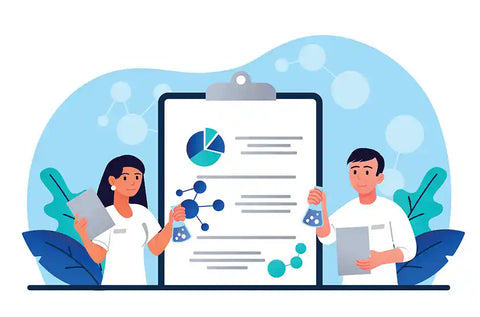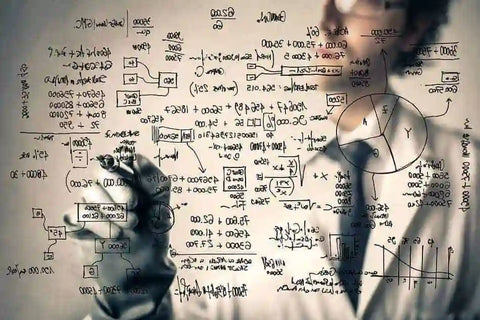Identifying & Avoiding Plagiarism in Academic & Scientific Writing
The classical Latin word ‘plagiarius’ means ‘kidnapper,’ and even in the ancient world the term could be used to refer to a ‘literary thief.’ Plagiarism is not (and has not been) viewed in a negative light in all places and times, however, and borrowing the words, ideas and images created by another person can be considered a compliment to the originator. In contemporary western culture, this compliment is one that must be clearly and formally acknowledged with appropriate and accurate references to the source in question. Using the words, ideas and images of others without acknowledging their creators constitutes plagiarism and can have dire consequences, including the rejection of an article submitted for publication, the retraction of one already published and the loss of respect among colleagues and the larger academic or scientific community.
There is no doubt, then, that plagiarism must be avoided if you are reporting your research in English (and in many other languages as well), but exactly what constitutes plagiarism can be a little unclear at times. Obviously, buying or stealing the writing of others, having another person write your work for you or copying large sections of text from a source without acknowledging it is plagiarism. When it comes to using the words you find in a source too closely as you paraphrase or summarise them, or communicating your own ideas without properly acknowledging the ideas of others that have influenced them, matters are rarely so clear. The same is the case with decisions regarding what constitutes common knowledge and generally accepted facts, both of which can be used without crediting specific sources, but only if they are truly ‘common’ or ‘generally accepted.’ Since it is better to give credit when it is not necessary than to neglect that credit when it is, a safe practice is to provide references for any information (particularly specialised information) that you discover outside of your own mind and your primary research, whether that information consists of words (written or spoken), ideas or visual material.
Many universities have specific policies on plagiarism and provide guidance on identifying and avoiding it in scholarly writing. Such guidance tends to be geared towards students, but it can be equally useful for faculty and staff. If you cannot find the advice you need, however, or would simply like more information on the subject, Purdue University’s Online Writing Lab (OWL) is immensely helpful. Many informative pages can be found on the OWL site map at http://bit.ly/1qciAB8: ‘Is It Plagiarism?’ and ‘Safe Practices’ (under Research and Citation, Using Research) provide advice on identifying plagiarism and outline specific practices for avoiding it; ‘Plagiarism and ESL Writers’ (under English as a Second Language, ESL Students) explains the concept of plagiarism for those who may not be familiar with it, defines some terminology and suggests avoidance techniques; and the section on Preventing Plagiarism (under Teacher and Tutor Resources) provides lesson plans and handouts that may prove useful as well. Among the Research and Citation resources, there are also pages on acceptable methods for citing, quoting, paraphrasing and summarising sources that offer the techniques needed to avoid the intellectual offence of plagiarism.
Why Our Editing and Proofreading Services?
At Proof-Reading-Service.com we offer the highest quality journal article editing, dissertation proofreading and online proofreading services via our large and extremely dedicated team of academic and scientific professionals. All of our proofreaders are native speakers of English who have earned their own postgraduate degrees, and their areas of specialisation cover such a wide range of disciplines that we are able to help our international clientele with research editing to improve and perfect all kinds of academic manuscripts for successful publication. Many of the carefully trained members of our manuscript editing and proofreading team work predominantly on articles intended for publication in scholarly journals, applying painstaking journal editing standards to ensure that the references and formatting used in each paper are in conformity with the journal’s instructions for authors and to correct any grammar, spelling, punctuation or simple typing errors. In this way, we enable our clients to report their research in the clear and accurate ways required to impress acquisitions proofreaders and achieve publication.
Our scientific proofreading services for the authors of a wide variety of scientific journal papers are especially popular, but we also offer manuscript proofreading services and have the experience and expertise to proofread and edit manuscripts in all scholarly disciplines, as well as beyond them. We have team members who specialise in medical proofreading services, and some of our experts dedicate their time exclusively to dissertation proofreading and manuscript proofreading, offering academics the opportunity to improve their use of formatting and language through the most exacting PhD thesis editing and journal article proofreading practices. Whether you are preparing a conference paper for presentation, polishing a progress report to share with colleagues, or facing the daunting task of editing and perfecting any kind of scholarly document for publication, a qualified member of our professional team can provide invaluable assistance and give you greater confidence in your written work.
If you are in the process of preparing an article for an academic or scientific journal, or planning one for the near future, you may well be interested in a new book, Guide to Journal Publication, which is available on our Tips and Advice on Publishing Research in Journals website.








